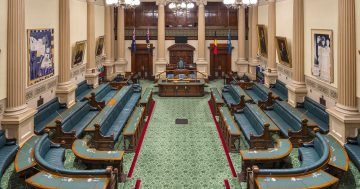Christopher Joye* says most observers have completely overlooked the fact that the Commonwealth budget is on track to record a surplus this year on two of its three key measures.
 Media and most market participants have completely overlooked the fact that the Commonwealth budget is on track to record a surplus this year on two of its three key measures, with major implications for the AAA rating and bank funding costs.
Media and most market participants have completely overlooked the fact that the Commonwealth budget is on track to record a surplus this year on two of its three key measures, with major implications for the AAA rating and bank funding costs.
On 4 July, the Department of Finance quietly released the Government’s budget results for May, and thus the first 11 months of the financial year.
These showed that the Federal Government recorded a chunky $9.4 billion surplus in May on its “fiscal balance” measure, with the “underlying cash balance” and “net operating balance” metrics likewise registering surpluses of $4.9 billion and $10.4 billion, respectively.
Much more importantly, Treasurer, Scott Morrison’s budget is officially in surplus for the first 11 months of 2018 on both the net operating balance ($1.9 billion surplus) and the fiscal balance ($1.1 billion) benchmarks.
Only the underlying cash balance remains in deficit ($10 billion).
It’s helpful to put these extraordinary results — which have blindsided virtually all analysts, investors and rating agencies — in context.
In Morrison’s May 2017 budget, he forecast that Australia’s net operating and underlying cash balances would both suffer large deficits of $20 billion and $29 billion respectively in the 2018 financial year.
Morrison is now $22 billion ahead of these estimates on the net operating balance measure and $19 billion better off on an underlying cash basis.
While it’s certainly conceivable that the month of June could lurch back into deficit and erode these gains, the fact remains that analysts and rating agencies excoriated Morrison for being far too optimistic in his 2017 budget.
And yet he has massively outperformed these numbers by about $20 billion in 2018 alone.
Subject to how June goes, Morrison could deliver a full-year budget surplus on two of the three key measures, and is all but certain to move the budget into surplus this financial year on all benchmarks.
Key drivers
The only other analyst I could find who has picked up on this is CommSec’s Craig James, who comments that this is the “smallest rolling annual deficit for nine years”.
“For the 11 months to May the operating balance is almost $2 billion in surplus — over $7 billion better than [the Government] expected [only two months ago in its May budget],” James says.
The driver of Morrison’s upside surprise is better than expected commodity prices, labour market conditions, and overall economic growth.
This will likely compel S&P’s sovereign analyst, KimEng Tan to consider taking the AAA rating off its “negative outlook” and restoring it to a “stable” footing, which few thought possible 12 months ago.
S&P’s Sharad Jain has already flagged that the agency is contemplating upgrading Australia’s economic risk score from 3 to 2 (lower is better), which would lift the credit ratings on the major banks’ hybrids from BB+ to BBB-.
It would also improve the ratings on their subordinated bonds to BBB+, which all else being equal should ameliorate their funding costs.
According to the Reserve Bank of Australia (RBA), housing credit expanded, not contracted, by 0.4 per cent in May and has increased by a handsome 5.8 per cent over the last 12 months.
There has been a welcome deceleration in overall housing credit growth in recent years as regulators pushed banks to substantially boost the conservatism of their lending standards since 2014.
While housing credit growth will continue to soften, it is not going to contract as sharply as some have warned, with the RBA backing our argument that any additional tightening in lending standards is likely to be modest.
Crucially, this normalisation in housing credit growth towards the rate of change in national incomes is precisely what credit rating agencies wanted to see.
Aussie housing has been heinously expensive for some time, and we desperately needed an orderly mean-reversion in valuation fundamentals, which is exactly what is happening.
Bank funding costs
A short-term headwind for housing will be further out-of-cycle interest rate hikes as the banks recover elevated funding costs wrought by a hike in the short-term price of money.
There has been much debate as to why these short-term funding costs spiked in Australia at the end of the June quarter, but not anywhere else.
One explanation seems persuasive: a huge jump in the demand for Australian dollars from hedge funds seeking to use Australian repurchase (or “repo”) agreements to provide cost-effective financing, or leverage, to fund government bond futures basket arbitrage trades and foreign exchange arbitrage.
In 2015 these “non-residents” only borrowed about $20 billion via Australian repos.
This had leapt to almost $80 billion by March 2018.
In a world where banks are subject to much tougher capital adequacy and liquidity standards, it makes sense that they may seek to reduce the dollar value of lending they do via repo as they approach quarter-end.
Other contributing factors include: a drop in deposit growth that has generated more demand for short-term borrowing; a striking increase in competition from foreign (mainly Asian) banks that are using more short-term funding; the unusual situation where Australia does not centrally clear its repo trades, which reduces liquidity and increases execution costs; and the fact that budget surpluses are resulting in the Government depositing much more money with the RBA, which is buying overseas assets it hedges back into Aussie dollars that creates yet more demand for local currency and puts upward pressure on short-term rates.
* Christopher Joye is a portfolio manager with Coolabah Capital Investments and an AFR Contributor. He tweets at @cjoye.
This article first appeared at www.afr.com.











